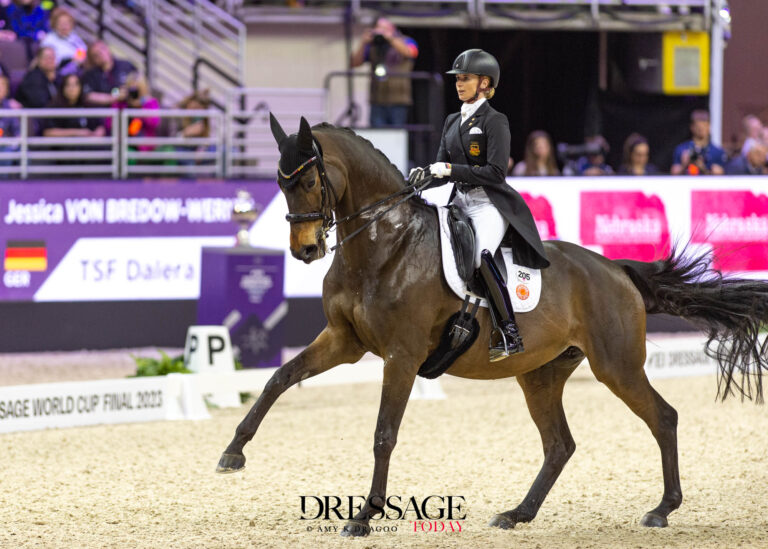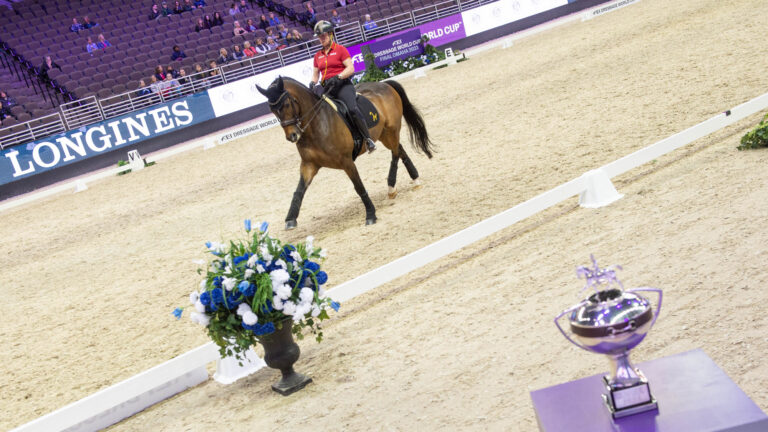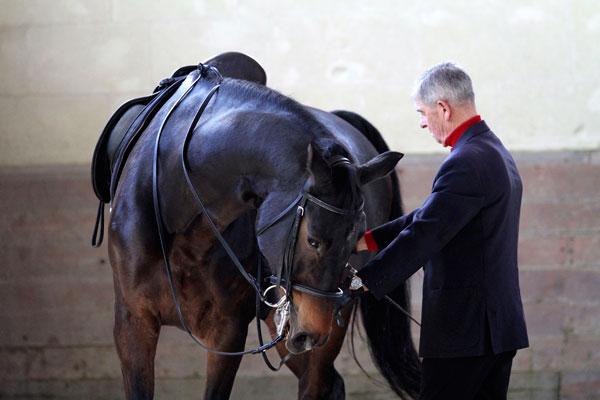
Nearly 450 years ago, the Spanish Riding School was established in Vienna, Austria, during the Habsburg Monarchy. With its roots in military traditions dating back to Xenophon, a Greek historian and philosopher born to a wealthy equestrian family in 430 BC, the school is famous for the high level of training and precision of its Lipizzan stallions. With their traditionally costumed riders, they perform breathtaking quadrilles in beautiful and ornate surroundings to the delight of the public.
Today the horses are bred in nearby Piber, Austria, but they take their name from one of the original studs in Lipizza, now called Lipica, near Trieste in modern Slovenia. The stallions are trained under saddle, in hand and, finally, in the airs above the ground, which include the precise and powerful movements of capriole, levade and courbette.
The dancing white horses at the Spanish Riding School in Vienna may seem to many people like something out of a fairy tale. But for Oberbereiter (Chief Rider) Andreas Hausberger, it is his vocation and his life’s work to train the stallions and riders for which the school is known.
Hausberger entered the Spanish Riding School in 1984, and became a rider in 1992 and Chief Rider in 2007. Along with fellow Chief Rider Wolfgang Eder, he supervises all aspects of the training of horses and riders. “It’s not a job. It’s our life,” he said. “Nobody wants to retire, everyone wants to stay and work with these horses. It’s a magical place; it’s a world of its own. It’s hard to describe. You have to experience it.”
Not only does Hausberger live and breathe the Spanish Riding School at home in Vienna, he works tirelessly to bring the principles of classical riding to other parts of the world and make it understandable for the average dressage rider.
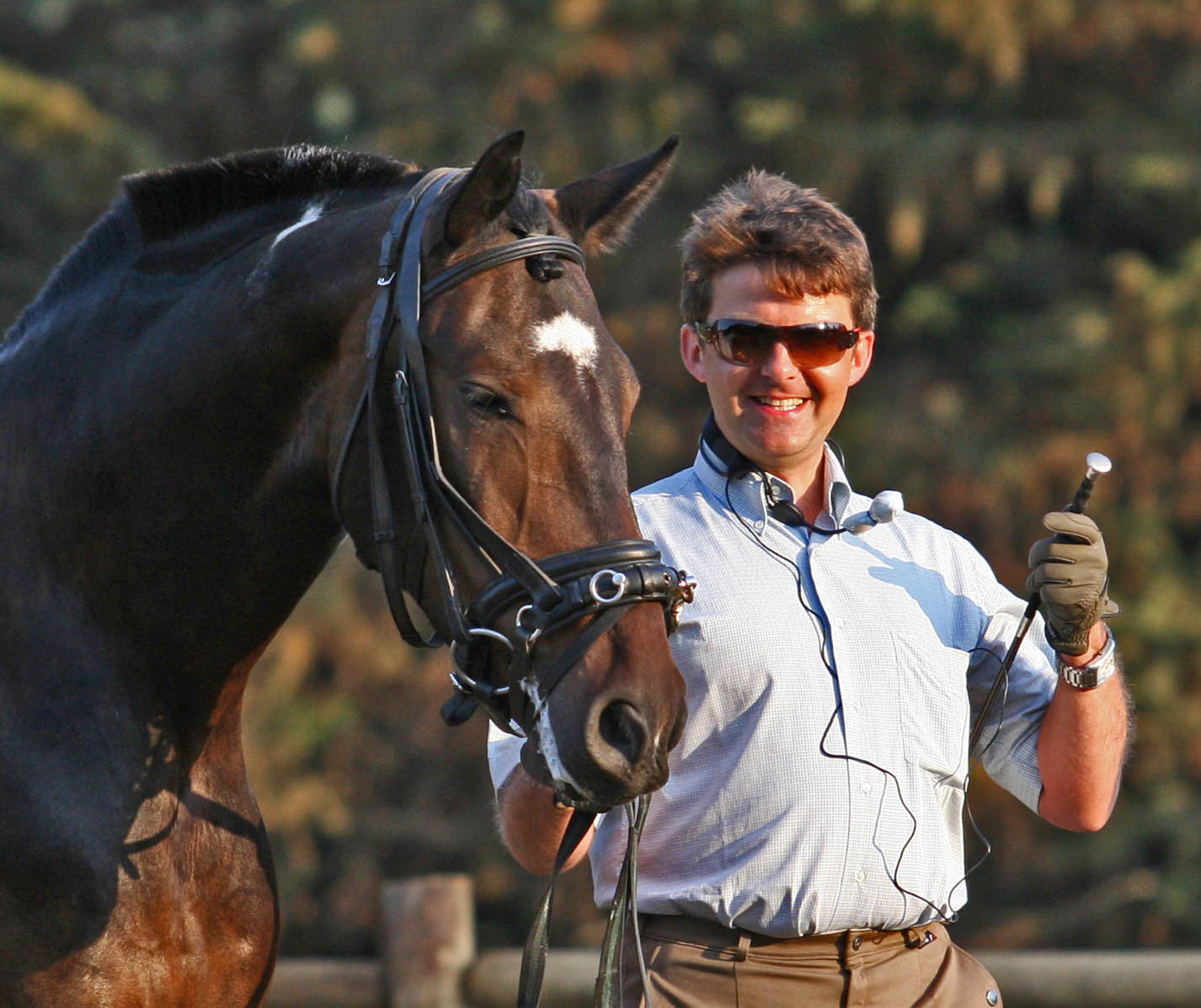
Bringing Classical Dressage to America
For the past 18 years Hausberger has been bringing the training methods of the Spanish Riding School to the United States. He began teaching annual five-day clinics at USEF “S” judge Jennifer Roth’s Across the Diagonal Farm in Carmel, California. In 2015 Roth relocated to the countryside near Tryon, North Carolina, and since then, Hausberger has traveled to the Carolinas to conduct clinics. His visits have turned into something of a U.S. tour, and he has also taught in Colorado, Florida, New York, Washington and other locations.
While Hausberger is best known for training horses and riders and performing in the famous quadrilles at the Spanish Riding School, he has also competed outside of the school and trains competitive riders, too. His students Jessica von Bredow-Werndl and Sönke Rothenberger, both of Germany, have achieved much success in Grand Prix competition: in 2016 Rothenberger was a member of the German team that claimed the Olympic gold medal in Rio.

Hausberger commented that more and more high-level competitive riders and professionals have begun to attend his clinics over the years. “They realize we don’t do tricks at the Spanish Riding School—there’s nothing mythical about it,” he said.
“A correct seat, correct piaffe, passage and collected exercises—those bring higher marks in the test. In the past two to four years, I have taught more and more professional riders, champions even. I trained the USDF Region 5 Grand Prix Champion Suzie Haynes Hallé from Colorado, for example—and a lot more judges are actively riding in my clinics. The quality of riding that I see at my clinics has really improved in the past few years. Sometimes you see in the media that people complain that the Spanish Riding School is like a riding museum and is not up to date any more. I tell you, since I helped Jessica for the past nine years and she’s really in the top, and Sönke is top in Germany, there’s nothing antiquated in our philosophy, and more and more people are realizing that.”
Roth has a background in classical riding: She grew up in California and as a teenager trained at the Riding Institut Egon Von Neindorff in Germany, where there is a focus on classical dressage. In her 30s she received the Asmis Scholarship and traveled to Germany again to train at German Olympian Karin Schlüter’s barn, where French Olympic silver medalist Margit Otto-Crepin trained.
Roth had been breeding Lipizzan horses since 1990 and in 1995 hosted a Lipizzaner breeding evaluation at Stone Pine Farm in Carmel Valley, California. During the evaluation she had a conversation with Dr. Jaromir Oulehla, who was the director of the Spanish Riding School for many years, and he suggested that Roth invite Hausberger over to teach. At the time Hausberger was a Bereiter (Senior Rider) and had been training riders at the Lipizzaner Centre Kyalami in South Africa, which is home to a team of horses and riders that follow the traditions of the Spanish Riding School in Vienna, and teaching clinics in Australia, so he had some experience teaching riding lessons in English.
In the beginning the language barrier was difficult for Hausberger, whose native language is German. But over the years he has become fluent in English. “I had my school English but that was it. I had to practice,” he said. “Today I teach in lots of countries around the world, mainly Germany, the UK, France and America. I’ve also been to the Netherlands, you name it.”
Asked about his early impressions of dressage in the United States, Hausberger said, “As Jennifer is a qualified dressage trainer and judge and has a background in classical dressage, she, of course, has a high standard of riding and her pupils are very good. The United States is a country where lots of people are riding and it was not difficult for me to teach there. My English was not very good in the beginning, but I’ve learned.”
The Students
Over the years, Hausberger has taught a wide variety of horses and riders. Paula Langen of Carmel Valley, who runs the office of the California Dressage Society (CDS), started attending his clinics as an auditor and was so impressed with his clear and concise training methodology that she later brought her Friesian/Paint cross, whom she has trained up to Grand Prix level, so that she could ride with him.
“I am a long-time dressage rider, mostly as an amateur rider,” she said. “I run the office for the CDS, so my work and my free time are all about dressage. I started riding dressage back in the ‘50s with USDF Hall of Famer Violet Hopkins [a driving force behind educational opportunities for dressage instructors] in Michigan. But I have developed most of my riding skills in California, starting in the 1970s until now, riding with coach and U.S. Dressage Team member Alexsandra Howard, prolific instructor Major Anders Lindgren, who was instrumental in developing the USDF Instructor Certification Program, and Jennifer Roth.”
Langen recalled, “I wanted my new young horse at the time to have the opportunity for a great start in piaffe and passage without ever getting afraid or tense. Andreas gave him the best introduction to piaffe and passage as well as basic training. The most important thing I learned was to be quick in rewarding any effort on the part of my horse—to praise and reward him for the slightest improvement.”
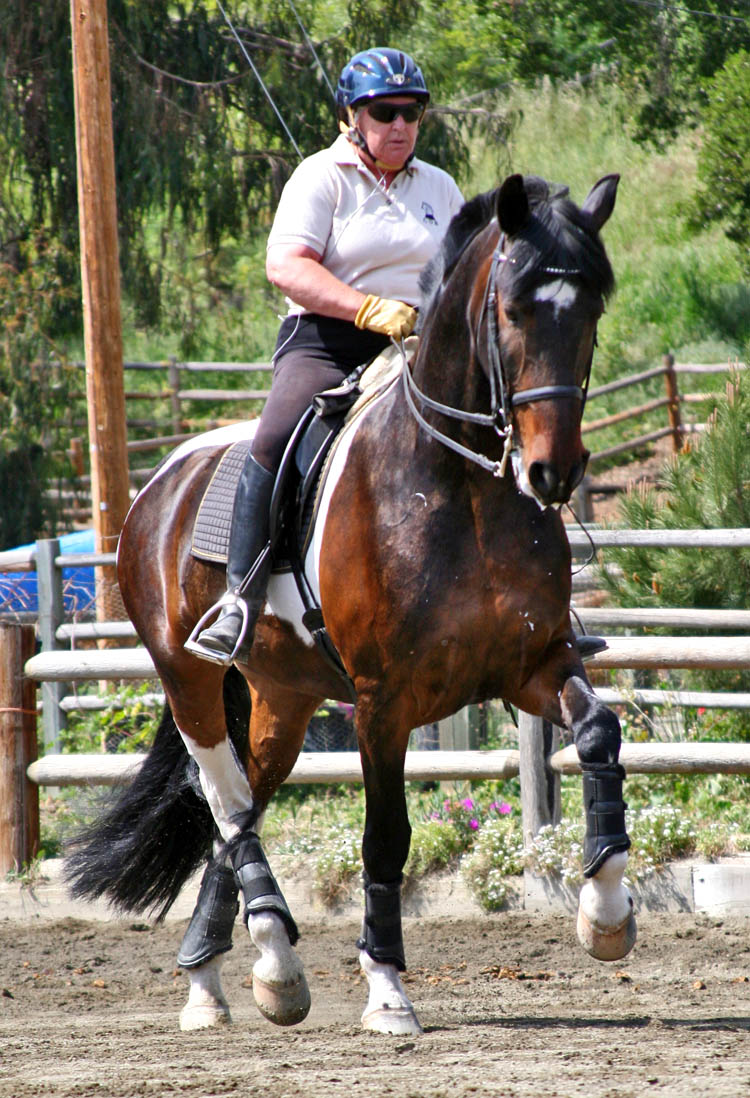
Langen has now ridden with Hausberger for about 10 years. “Every year I am inspired and challenged on the journey to better training and riding,” she says. “Andreas is such a positive teacher and praises the students as much as he praises and rewards the horses.”
Beth Sproule, an FEI rider from Warwick, New York, said that for her, Hausberger is a valuable source of knowledge and motivates her training. “When working with Andreas as his student, you get a sense of being part of a structured training system that comes from established successful methods. He continually expresses kindness toward the horse and praise for the horse. With all this in place, the results are amazing. I’ve felt my horse work with enthusiasm, energy and willingness to perform above where we’ve been. From his clinics I always come away inspired and excited for the future!”
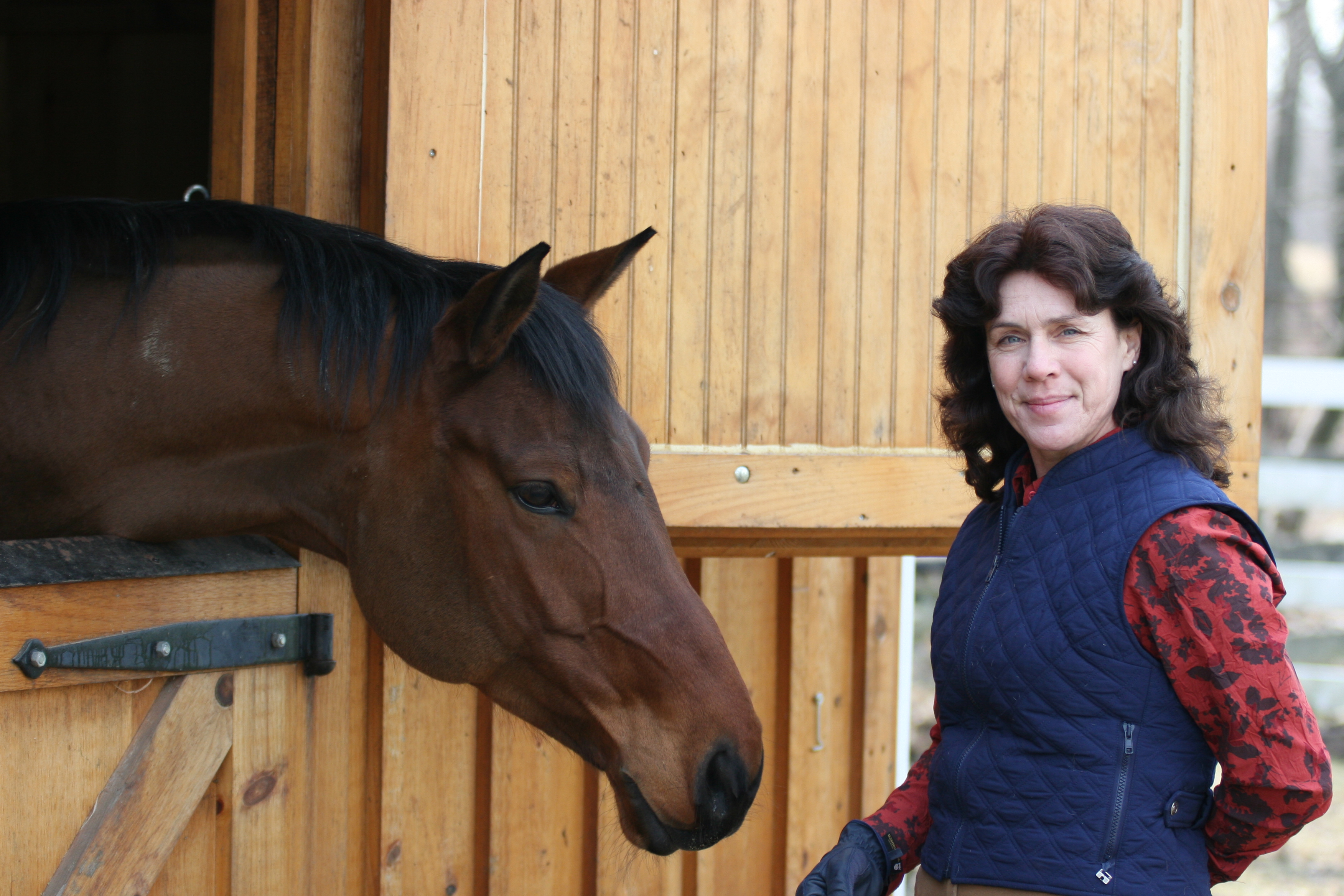
Roth has also benefitted greatly from his instruction. “You learn really correct basics from the point of view of the Spanish Riding School, and I’ve learned a lot about work in hand and piaffe and passage over the years,” she said. “He teaches you all about the timing, how and when to use the whip and where and when to reward and when to correct.”
The Evolution of Dressage in the United States
Of course the U.S. dressage scene has changed drastically over the past two decades. “People get more and more interested in proper training, and that’s a big change not just on the West Coast but in the central United States and the East Coast,” said Hausberger. “I’m traveling the U.S. once a year, and more and more people are involved in the sport and the horses are getting better. People are interested in buying good horses and they’re also interested in good teaching. When you look now to Wellington, Florida, the dressage trials there, it’s crowded. It’s not just the lower levels. The Grand Prix and Grand Prix Special are crowded. That wasn’t the case 15 years ago. The international riders boost the scene as well.”
He says that one of the things he enjoys the most about his travels is seeing children develop over the years. “In California, Jennifer had a group of three little girls on ponies, just starting their dressage careers. I saw them grow up and move into the FEI Junior and Young Riders, and it was really nice for me to help form those kids and give them ideas for how to do things. Even when they try, that makes my heart smile. It satisfies me a lot. Jennifer has brought up numerous very good riders, and it’s fun for me to see them over the years, too.”
With a busy performance and teaching schedule, Hausberger no longer has time to compete in dressage. “I travel each and every weekend. After the performance in Vienna I drive to the airport and fly here and there and everywhere,” he said. “The travel is the stressful part, but the teaching—to help young riders—is what I enjoy. The travel can be tiring, but the teaching is pure passion.”
Focus on the Rider
Of course, a clinic offers only a limited amount of time for Hausberger and participants to work together, but he hopes that during this time he can impart useful knowledge to riders and auditors. He explained, “I always start with the rider, never with the horse. I focus on the horse, too, of course, but mainly on the rider, to fix problems with the horse. That works all the time. The seat of the rider is paramount not just at the Spanish Riding School but everywhere. It’s paramount that you work on the seat, the timing, the riding in general, and then everything falls into place.”
At the Spanish Riding School, he pointed out that riders spend years working on the longe line to develop an independent seat. Later, when the Chief Riders think it necessary, even highly experienced riders go back to longe lessons to improve their seat. “First of all is the correct position in the saddle: that you have both seat bones in the saddle and when the horse does a bigger stride, you have to keep the balance without holding on the reins, not using the reins to hold yourself in balance.”
Sproule recalled some of this work from her clinic experience. “He worked with us in the canter and had us spiral in and out until I found myself turning my horse in collected canter just from my seat bones. It was pretty cool!”
There are many exercises that Hausberger uses to improve the seat and he includes them in his clinics. Turning the upper body left and right, circles with the upper leg, circles with the toes, circling the arms and “around the world” in walk, trot and canter are a few of the exercises that he likes for improving the rider’s balance and seat.
At the Spanish Riding School, once the rider’s seat is independent and balanced, the rider sits on the fully trained stallion—always under supervision, but at this point the stallion trains the rider as they learn piaffe and passage, pirouettes and so on.
“The schoolmaster is important in the rider’s education,” Hausberger said. “And we are blessed here because we have six to eight school stallions who are the professors, who train the eleves [trainees].”
While he appreciates the value of a schoolmaster, Hausberger believes that there are no unsuitable horses—only unsuitable riding and training. “The dressage is there for the horse. It can improve each and every horse,” he said. “The horse is not there for the dressage.”
Training the Horse
Roth explained that because her seat was already established when she began riding with Hausberger, he spends most of his time teaching her with a focus on training the horses. “He’s worked with all of the horses I’ve bred. We have worked on longeing the horses correctly, starting them correctly and getting them over their backs. It’s a totally different way of starting a horse: Too often, riders just sit up there with the horse going around with a hollow back for the first year or so they’re riding. But it’s very important that the horses work over their back, from the hind leg to the hand, from the beginning of their training. Andreas focuses on a few things, keeps it simple and tries to build you up systematically.”
At The Spanish Riding School, horses are started under saddle at age 4. Hausberger cautioned, “Don’t start horses too early because you don’t lose anything when you start them later, but you might lose a lot if you [rush them].”
Knowing how to ask a horse for something and when to stop asking so that the horse learns instead of being forced to do something, is very important, said Roth. “Andreas says, ‘Piaffe is not fear on the spot.’” She explains that much of the classical system of training is about praise, allowing horses to learn and rewarding them when they are correct.
“I often see competitive riders pressuring horses and asking for more and more. Part of the reason the horses at the Spanish Riding School live so long and are so relaxed is that the trainers take more time with them and use the training to develop the horses slowly and correctly. A lot of times, the slow way is actually the faster way because horses don’t get burnt out, overwhelmed or injured if you take your time. It’s important not to be greedy as a trainer, always asking for more.”
While riding with a dressage master like Hausberger could be intimidating for your average dressage enthusiast, Roth said that is not the case. “Andreas is sweet. He’s delightful and he makes it fun even though he is very serious.”
Work In-Hand
One of the specialties of the Spanish Riding School is the classical work in- hand, and Hausberger is particularly talented with the long reins. There is a strong demand for Hausberger to integrate this work into his clinics as well as the ridden work.
“When I talk about work in-hand, it’s mainly to produce piaffe in-hand,” he explained. “It’s easier for the horse to learn in-hand and then under saddle. Sometimes I work on my own, but it depends on the horse. Of course, this is not something to try on your own—you need to have someone experienced there to help, to show you how it’s done.”
Beth Sproule was fortunate to have Hausberger work with her young horse in-hand during a clinic and said, “Andreas is a master at working in hand with horses to teach the piaffe and also at helping from the ground. I’ve seen him quietly work with my up-and-coming FEI horse in hand and saw my boy sit and produce fantastic classic piaffe steps.”
Roth said that he shows riders which equipment to use and how to use it correctly with one or two people working from the ground or with a person riding the horse and a helper on the ground. “There’s a great exercise called Die in Beauty, where you sit with one hand on the pommel and the other hand hanging down while he works the horse. You are not an active participant; you sit passively and follow the movement while he controls the horse. The horse is learning the movement with the weight of the rider on his back while he teaches the horse to work correctly without the rider disturbing the horse.”
Hausberger explained, “When the horse is moving perfectly and is in perfect balance and engagement, then the rider must focus on himself—not interrupting the horse, but concentrating on his perfect seat.”
Again, the reward is key. “I remember once when we organized an evening seminar on work in hand, and Andreas showed everyone the necessary equipment,” recalled Roth. “Then he said, ‘the most important equipment we have is this,’ and he pulled a sugar cube out of his pocket and held it up for everyone to see. He constantly emphasizes reward in training to make it clear to the horse when he has done well.”
The Value of Correct, Classical Riding
Hausberger explained that the real specialty of the Spanish Riding School is collection and work in hand. Of course, the quadrille is a specialty, too. “Coming to the clinics, most people know how to do the movements required to ride a test, but they need to learn about correct classical riding with the focus on the horse’s carriage being good from back to front.”
Over the years, Roth has learned much from Hausberger. But one of the things she values most is watching him work with other people and their horses. “I love watching how he works with each student over the years to employ the basic principles of training—rhythm, suppleness, contact, impulsion and collection—to find where the weakness lies in the basic principles to strengthen the horse and rider combination, to strengthen the partnership and develop better connection, harmony and beauty.
“He is a master at understanding the basics and can make simple tweaks to affect positive change,” Roth continued. “This has helped me so much in becoming a positive instructor and trainer. In this age, where wealth can buy million-dollar horses and top trainers can force movements out of a horse, training with Andreas is very Zen-like. In my youth I did a lot of Zen study and practice, and you can make a comparison between making a Grand Prix horse and reaching enlightenment. It takes mindful training, and as they say at the school, “only perfect practice makes perfect.” I remember him telling me the first time he came over, ‘Dressage starts in the stable!’ Clearly Andreas loves horses.”
This article first appeared in the June 2017 issue of Dressage Today.


